 Yesterday’s post introduced the idea of neighboring. It’s a place-based approach to community problem solving that focuses on individuals’ talents as a resource to improve their neighborhoods.
Yesterday’s post introduced the idea of neighboring. It’s a place-based approach to community problem solving that focuses on individuals’ talents as a resource to improve their neighborhoods.
We’ve found seven ways that individuals, organizations, and businesses can use when working with communities to engage and empower local volunteers and to build effective partnerships with their community. Whether you’re planning a short-term volunteer project or a long-term community initiative, these tips can help bring about real change!
1. Try to understand the language and nature of volunteering
- Understand the history and culture of the community.
- Include youth, immigrant communities, seniors, faith communities, and refugees.
2. Overcome barriers to volunteering.
- Understand the community obstacles. What has traditionally kept people from volunteering?
- Understand the organizational barriers. Have organizations tried to work in the community previously? What made their actions successful?
3. Empower the community.
- Create space for residents to own their issues and develop solutions.
- Support residents to witness the benefits of their involvement.
- Engage residents in the decision-making process.
- Mobilize residents around issues that impact them directly.
- Host community meetings and provide examples of success.
4. Cultivate community members’ skills and talents.
- Acknowledge and build on existing community assets.
- Help members identify their own skills and talents.
- Allow residents to have a real role in the partnership.
- Encourage residents to plan and lead projects.
- Show the relationship between residents’ skills and project outcomes.
5. Strengthen existing community leadership.
- Cultivate leadership and the internal capacity of community members to lead and engage in community activities.
- Help develop leadership and recognize different leadership styles.
- Identify volunteer leadership development training.
- Encourage leaders to have a leadership role in the partnership.
6. Acknowledge that volunteering is an exchange.
- Offer volunteers something in exchange for the time, talents, and efforts they contribute to bettering their communities. A simple, honest, thank you note is enough to recognize each person’s contribution, but you can always do more.
- Help people see the benefits of the work that has been done, and the work that they can do.
- Understand that it’s okay to receive something in exchange for volunteering.
- Develop mechanisms by which residents receive tangible outcomes such as tutoring, child care subsidies, and job opportunities.
7. Ensure community readiness.
Participate in building the internal capacity of communities to partner with outside organizations and engage residents in community activities.
- Be patient; community building and resident involvement takes time.
- Remember that relationship building is a process.
- Be flexible; survival issues demand time and attention.
- Help communities resolve conflict that may be preventing involvement.
- Set your community up for success but accept if it is not ready.
Have you used neighboring practices in your community? Let u know what worked for you in the comments!
Related articles
- Seven Essential Strategies for Engaging Local Residents in Community Projects
- 4 Tips for Incorporating Neighboring into Existing Programs

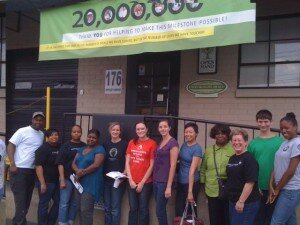 Individual and family volunteering makes a huge impact on the community. Employee volunteering will not only make an impact on the surrounding community, but also on the work environment. Employees who volunteer together will feel more connected to the community in which they work, and also closer to their coworkers.
Individual and family volunteering makes a huge impact on the community. Employee volunteering will not only make an impact on the surrounding community, but also on the work environment. Employees who volunteer together will feel more connected to the community in which they work, and also closer to their coworkers. volunteer program started today!
volunteer program started today! employee committee who can dedicate themselves to greater participation. Develop written policies about employee participation in service events (i.e. how many project must staff members participate in). Learn best practices of employee volunteer programs so that you may implement them into your program.
employee committee who can dedicate themselves to greater participation. Develop written policies about employee participation in service events (i.e. how many project must staff members participate in). Learn best practices of employee volunteer programs so that you may implement them into your program.
 ntacting your local newspaper article. By reporting your results, the community will look more favorably at your company, and other companies may be more enthusiastic about starting a program of their own!
ntacting your local newspaper article. By reporting your results, the community will look more favorably at your company, and other companies may be more enthusiastic about starting a program of their own! the comments sections below!
the comments sections below! The birds are chirping, the weather is perfect, and you need an activity to get you outside and active! Spring is the time to organize a community sports activity! There is no better reason than perfect weather to get your community together for a fun activity?
The birds are chirping, the weather is perfect, and you need an activity to get you outside and active! Spring is the time to organize a community sports activity! There is no better reason than perfect weather to get your community together for a fun activity? you would like to collect donations or you will charge for admission. Determine your space size and how many participants it can hold.
you would like to collect donations or you will charge for admission. Determine your space size and how many participants it can hold.
 Forming a sports team is a great way to start the process of neighboring in your community. Whether you form a little league baseball team or an adult swim team it is a great way to be social with your community members, while improving overall health through being active.
Forming a sports team is a great way to start the process of neighboring in your community. Whether you form a little league baseball team or an adult swim team it is a great way to be social with your community members, while improving overall health through being active.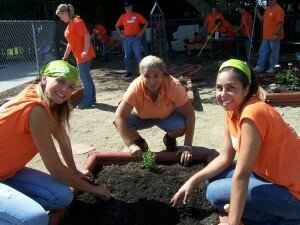 In case you have just awoken from winter hibernation, spring has finally arrived! From the high levels of pollen to the newborn animals running around spring is in full swing and will not be ignored. Since we cannot hide from it, it is time to celebrate the new spring season with volunteer work (we would not be
In case you have just awoken from winter hibernation, spring has finally arrived! From the high levels of pollen to the newborn animals running around spring is in full swing and will not be ignored. Since we cannot hide from it, it is time to celebrate the new spring season with volunteer work (we would not be 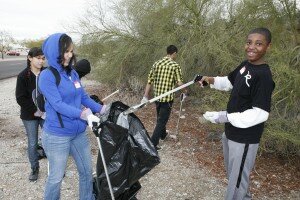

 Keeping your community beautiful is a great way to better your economy, environment and well-being. This month get out and take pride in your community’s appearance. Let’s clean up our neighborhoods and make every month Keep America Beautiful Month!
Keeping your community beautiful is a great way to better your economy, environment and well-being. This month get out and take pride in your community’s appearance. Let’s clean up our neighborhoods and make every month Keep America Beautiful Month!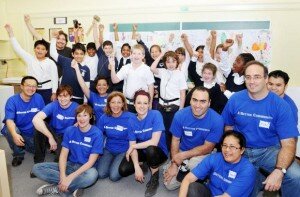 Happy Valentines Day to all! We hope that you are enjoying your chocolates, cards, or flowers from your sweetheart today. Did you know Valentines Day can be more than just honoring the love you share with your significant other? It is also a great way to show your volunteers just how much you love them and the tremendous service they give to you and your organization! Below are some great suggestions to show your volunteer love not only just today but always!
Happy Valentines Day to all! We hope that you are enjoying your chocolates, cards, or flowers from your sweetheart today. Did you know Valentines Day can be more than just honoring the love you share with your significant other? It is also a great way to show your volunteers just how much you love them and the tremendous service they give to you and your organization! Below are some great suggestions to show your volunteer love not only just today but always!





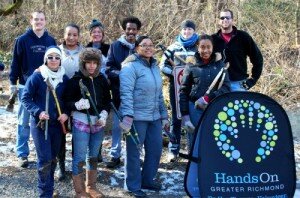
 man out with their successes and their struggles.
man out with their successes and their struggles.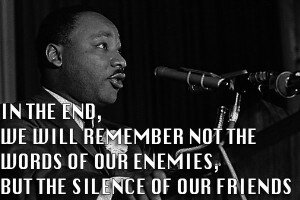
 During his lifetime Dr. King worked tirelessly toward a dream of equality. He believed in a nation of freedom and justice for all, and encouraged all citizens to live up to the purpose and potential of America. The Martin Luther King, Jr. Day of Service is a way to transform Dr. King’s life and teachings into community service that helps solve problems. MLK Day programs meet tangible needs, such as revitalizing schools and feeding the homeless; but also build a sense of community and mutual responsibility by spurring conversation. On this day, Americans of every age and background celebrate Dr. King through volunteering and unite to strengthen communities, empower individuals, and bridge barriers.
During his lifetime Dr. King worked tirelessly toward a dream of equality. He believed in a nation of freedom and justice for all, and encouraged all citizens to live up to the purpose and potential of America. The Martin Luther King, Jr. Day of Service is a way to transform Dr. King’s life and teachings into community service that helps solve problems. MLK Day programs meet tangible needs, such as revitalizing schools and feeding the homeless; but also build a sense of community and mutual responsibility by spurring conversation. On this day, Americans of every age and background celebrate Dr. King through volunteering and unite to strengthen communities, empower individuals, and bridge barriers.

